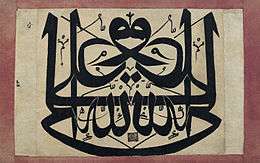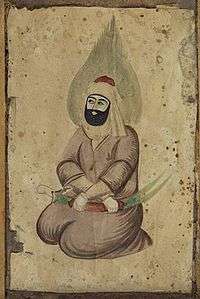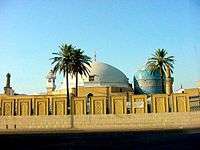Qutb ad-Dīn Haydar
| Qutb ad-Dīn Haydar | |
|---|---|
| Title | Qutb ad-Dīn Haydar |
| Died | 1221 CE (618 Hijri) |
| Religion | Islam |
|
Influenced by
| |
|
Influenced
| |
| |
|---|
 |
|
|
| |||
|---|---|---|---|
| The Fourteen Infallibles | |||
|
|||
| Principles | |||
| Other beliefs | |||
| Practices | |||
| Holy cities | |||
| Groups | |||
|
|
|||
| Scholarship | |||
| Hadith collections | |||
| Related topics | |||
| Related portals | |||
|
|||
Qutb ad-Dīn Haydar was a Persian Sufi saint and Malāmatī-Qalāndārī Sheikh, of possible Turkic origin,[1] and is buried in Zava, Khurasan. Qazvini, author of the Tarikh-i guzida, states Haydar was alive at the time of the Mongol invasion in 1220 and died in 1221 CE/618 AH.[2]
Haydar - the Persian form of his name is Heydar - founded an order of mendicant dervishes called as the Haydariyya known for their celibacy and self-mortification through piercing their own bodies with iron rings. His followers also wore felt and walked barefoot.[3]
He is also known by Heyder.
References
This article is issued from Wikipedia - version of the 11/22/2016. The text is available under the Creative Commons Attribution/Share Alike but additional terms may apply for the media files.

